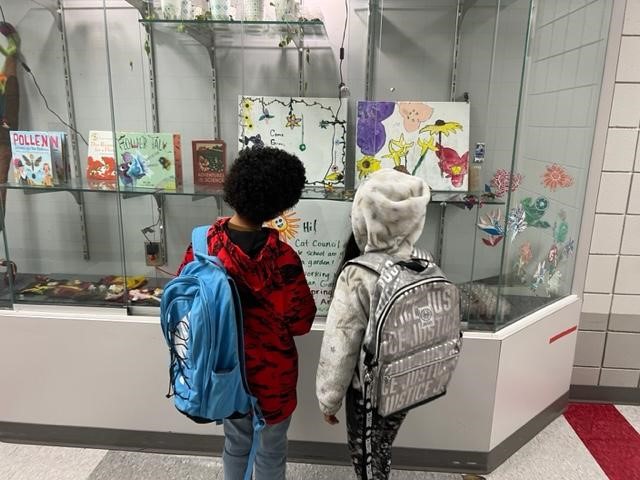School Gardens: Kid-Designed, Kid-Friendly
School gardens have a long history in the U.S., though most are designed by outside professionals, not by young people themselves. The goal of Smithsonian Gardens’ Green Ambassador: Design a Green Space program is to empower students to plan out and create a green space of their own, designed to meet the needs of their community.
Smithsonian Gardens has worked with a number of Washington, D.C.-area schools on garden design programs. This year we were eager to test out our school garden design program on a national level. SG worked remotely with a Smithsonian affiliate museum, the Springfield Museum of Art (SMOA) in Springfield, Ohio, to identify a local school that might be willing to try out our school garden design program and provide feedback on how it went. Museum educator Amy Korpieski of SMOA gamely agreed to be the “boots on the ground” to help Snyder Park Elementary School of Springfield, Ohio start a garden or green space on school property.

Students at Snyder Park Elementary in Springfield, Ohio, survey a possible planting site. (Photo courtesy of Meg Biser)
Connections born out of the project were many. The first step of the project for the students involved surveying their school community – teachers, students, staff, and leadership – on what they’d want from a garden at school. Educators and staff reached out to local farming, gardening, and environmental organizations for expert help and advice on planting, composting, and other matters.
School staff were aware of a planting site right in front of the school that was ripe for rejuvenation. Students carefully considered the implications of trying to plant in such a high-traffic location – would a fence be necessary to keep the younger students from trampling the seedlings? What height would keep the plant labels readable to smaller students? There was much to consider – there was no hose spigot on that side of the building, but the opportunity to create a welcoming aura right next to the main entrance of the school was too good to pass up. As one student put it, placing the garden in front of the school showed that “our school is a happy place and it is a nice warm place to be.”

A display case in the main hallway of Snyder Park Elementary School helped showcase the project’s purpose and progress for the whole school community. (Image curtesy of Meg Biser)
The students planned out a garden design that would reflect the many students at Snyder Park Elementary. Different sections of the garden would honor the different grade levels present in the school, kindergarten through sixth grade. Each grade level was represented by a different type and size of plant.

The final garden design. (Photo courtesy of Meg Biser)
What school subject can’t you learn from gardening? Smithsonian Gardens led two virtual lessons with students on the science of soils and pollinators to help ground the project in a science background. Educators read age-appropriate literature on pollination, soils, and other garden-related topics aloud to students during meetings. Connections to art blossomed as Springfield Museum of Art staff led the kids in making their own pollinator-themed needle-felted sculptures to display in the garden. Surveying the space and planning the garden exposed students to the connections between math and design as they used their own feet to measure distance.

Student drawings of their observations at planting sites. (Image courtesy of Meg Biser)
Over the course of the school year Smithsonian Gardens staff checked in on the project to give feedback and occasional training for school staff and educators. Teachers eagerly responded to a survey about what they’d want to know about gardening. They wanted to know more ways to plant sustainably, and they needed basic practical knowledge about when to plant what and how to make a maintenance calendar. They look forward to bringing the garden fully into being in the 2023-2024 school year.
In the meantime, the steps of the Green Ambassador school garden design program are publicly available on our website. Smithsonian Gardens is proud to announce the first school to earn their certification as a Smithsonian Gardens Green Ambassador: Burns Charter School of Oak Hill, Florida, which has built eleven planting beds, started a children’s garden, and planted trees on their school property. Will your school be next?
Meg Biser is a contractor for Smithsonian Gardens. This post was originally published by the Smithsonian Gardens newsletter. Copyright 2023 Smithsonian Institution. Reprinted with permission from Smithsonian Gardens. All rights reserved. Reproduction in any medium is strictly prohibited without permission from Smithsonian Institution.
Posted: 12 September 2023
-
Categories:
Collaboration , Education, Access & Outreach , Feature Stories , Science and Nature







